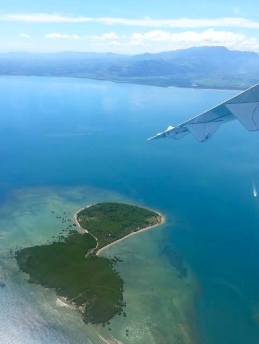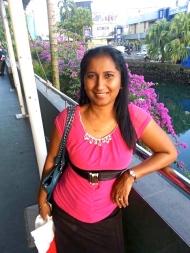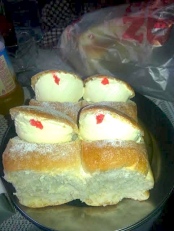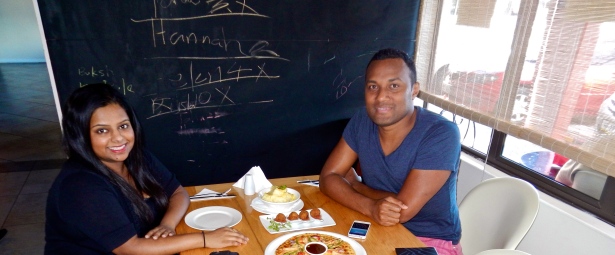Bula! (Hello) From Sunny Suva!
Firstly, I just want to say that I am extremely thankful to Noel Singh, Asad Khan, and their beautiful, wonderful families, including Nazreen, Aunty Nisha, Fazia, Aunty Amla, Aunty Prem, and Aunty Nim. My friend, Wanda, also deserves an enormous shout out for helping me with my finances. Thank you all so much for your love and support.
A little background about Fiji:
“Fiji, a country in the South Pacific, is an archipelago of more than 300 islands. It’s famed for its rugged landscape of blue lagoons and palm-lined beaches, and eco-activities from mountain climbing and surfing to soft coral diving and zip lining. Its major islands, Viti Levu and Vanua Levu, contain the lion’s share of the population, meaning much of the country is not crowded.” (Google)

#wingporn
Fiji is located near Australia and New Zealand, the countries that people visit for their picturesque natural beauty and scenic landscapes. In images of Fiji, you’ll find aquamarine water, azure lagoons, white sand beaches, and beautiful resorts surrounded by palm trees. Although what is captured on camera is real and Fiji is truly that gorgeous, there is so much more to this place than scenery.
The first record of an Indian in Fiji was by a man named Peter Dillon in 1813. Later, in 1879, Indians that came to Fiji arrived on a ship brought by the British. They were hired as laborers and were to work in the sugarcane plantations. On some of the farms, there were more women than men and so one man had multiple wives/partners. From this situation was born the current Indo-Fijian; most being a mix of Indian, Indigenous, and European races and Hindu, Muslim, and Christian religions. Slowly, the Indo-Fijians became true Fijians and the Indo part of the name was dropped.
In the past, the Fiji natives used to eat only the classic island food and wear their native clothing. Men wore just a sulu, which is a kind of like a long skort (shorts + skirt), or just coconut leaves around their waist, and women wore a coconut shell top and a skirt made of leaves. After the arrival of Indians, their lifestyle changed to reflect their new immigrants. The men and women started wearing pants, shirts, skirts, and blouses made of material; everyone started eating Roti (Indian bread) and Curry. Boys still wear the sulu with a shirt, but it’s part of their school uniform and it’s more of a fashion statement.
My journey:
I arrived at the Nausori airport after a twenty-four hour flight; I arrived full of energy, hyped at the fact that I was actually in Fiji, not exhausted in the least! I thought to myself, “I did it! I made it here despite the naysayers!” It’s a great feeling to accomplish what you set out to do no matter who stands in your way. While getting to Nausori,

Naz
the flight at Nadi had been delayed by two hours. I was thumping my foot, drumming my fingers, and huffing and puffing about how long we passengers had to wait for the flight to arrive, but the passengers that were from Fiji were taking naps, getting lunch, and socializing. It was amazing to see how much of a rush us Americans are always in to get places, finish our plans, and constantly plan our next move. The people of Fiji only think about the present moment and they literally do not stress about anything; they have never-ending patience! Coming out of baggage claim, I saw a face I had come to recognize via Facebook chat: there was Naz standing with a grand smile on her face next to her daughter, Lorain.
After loading the car, we stopped by Nausori-town to pick up pizza from Pizza King and cream bun from Hot Breads Bakery (two things I was told to eat), and made our way home.

Cream Bun – Hot Breads Nausori
There I got to know the members of the family I would be staying with. There was Naz, her husband, Yash, daughters, Lorain and Jasleen, mother-in-law, Kalawati, and brother, Asif. Later that same day, Naz, Yash, and the girls took me to the mall and the coast where I could take some pictures of the river and greenery. On my first day I felt so at home with all of them; I felt like I was already family, and I could not believe my luck to have met such wonderful people to help me stay in Fiji for an extended amount of time without rent.
As the week went on, I learned my whereabouts pretty quickly. I lived at Naagbaba Kuti on Vusiya Road next to the Raralevu Cemetery in Nausori. Naz taught me how to use the bus to minivan system in order to reach Suva, the capital, while paying under $1.50 US. The conversion ratio is 1:2 from USD to FJD.




I quickly realized that were only two buildings I could use wireless in, which were Tappoo City, similar to a huge four-level Sears, with the fourth level being a food court, and MHCC, which is like a mall mainly. (Tappoo is much better). I had to pay $2.50 US per hour of Internet usage. Things in Fiji were much more costly than I had planned for and I was so grateful I had somewhere to stay that didn’t need me to pay them daily. It was amazing to see that people with the least amount of money, gave the most.
When I looked around me everyday, I saw a simple form of life. They woke up, ate breakfast, went to school or work, shower, spent time together at home, and went to bed… nothing extravagant. The lifestyle and culture here was very similar to India, but people here lived happily and in peace; there was no drama. During my first two weeks, I spent a lot of my time here sight-seeing, journaling, watching movies, working on my book, helping the kids study for their exams, eating sugar cane for the first time, dancing to music with the girls, and meeting new people such as Asad’s friend, Nemia. Nemia and I had lunch at the Bad Dog Café located in Damodar City near Suva. I also tried the food of the natives, which consisted of casava and dalo, root crops that taste like potato.

Nemia and I at Bad Dog Cafe – Damodar City, Suva
By week two, I was already traveling to and from the city by myself. In Suva, I observed the people of Fiji. They walked slowly and they didn’t rush through their day. I walked much faster than most of the public here, and in the US I am considered a slow walker! I met Hindus, Muslims, Christians, Indians, Indigenous, and Asians and saw how they all lived in harmony. Fiji was a dream world…Fiji was Utopia. People don’t really understand what it’s like to live on an island until they stay with people who are from there. If your accommodations and surroundings are similar to the US (resort), you’ll never really know the actual Fijian life.
My second weekend here was my first partying experience. Fazia, Naz’s niece, invited me to her friend, Akshay’s, birthday party and it was a wonderful night. We ate at a place called Nando’s, which is like a Buffalo Wild Wings over here, and then went to two places called Onyx and Purple Haze. Onyx had wonderful air conditioning and great music, but Purple Haze played Bollywood songs and everyone wanted to stay there, even though they had terrible a/c. After dancing it out, we stopped by McDonald’s and got some water and headed home in the wee hours of the morning.



The day after that Fazia, Naz, Yash, and the girls took me to a place called Pacific Harbor Beach. On the way there, we stopped by a small food shack that had the most amazing fish and chips, a staple food here in Fiji. It was so good that the fish tasted like chicken. After swimming in salt water for a couple of hours, we hastily showered and walked around a complex named Arts Village. There, they had a dive restaurant that made honestly the best pizza I’ve had in Fiji, and the best tandoori chicken pizza I’ve had, ever. I consider it my favorite weekend so far during my stay here.
By week three I knew I didn’t have the finances to support myself over here until July. Of course I didn’t know that going into it as I was under the impression I would be able to work over here for a short time. With the new government and immigration laws, working without a visa was next to impossible. A few days ago, I went to Fiji Airways and rebooked my ticket for May 31st, which cut my trip in half. I would only get 7 weeks in Fiji instead of 12, but it was still worth it to come. Spending my days in the middle of a forest, surrounded by trees, rivers, and the Pacific coast, I have gained a sense of contentment. Being in paradise these last few weeks, I’ve learned to remain calm in intense situations, to not make decisions in haste, to avoid things that bring you unhappiness, and to focus on inner peace. I hope the remainder of my stay promotes this new thought process, so that I can carry this peace with me when I fly home.
Stay tuned for part two of “The Fiji Diaries!”
Vinakavakalevu (Thank you very much!)





